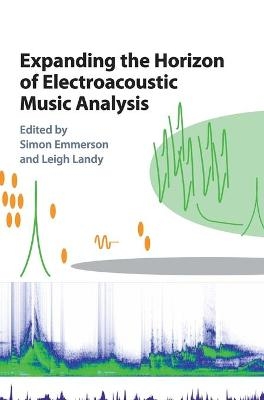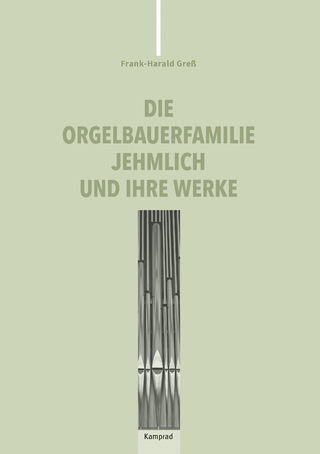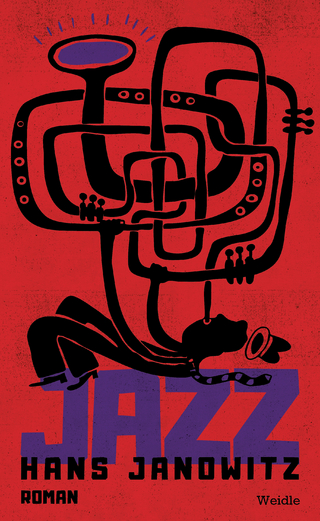
Expanding the Horizon of Electroacoustic Music Analysis
Cambridge University Press (Verlag)
978-1-107-11832-4 (ISBN)
Innovations in music technology bring with them a new set of challenges for describing and understanding the electroacoustic repertoire. This edited collection presents a state-of-the-art overview of analysis methods for electroacoustic music in this rapidly developing field. The first part of the book explains the needs of differing electroacoustic genres and puts forward a template for the analysis of electroacoustic music. Part II discusses the latest ideas in the field and the challenges associated with new technologies, while Part III explores how analyses have harnessed the new forces of multimedia, and includes an introduction to new software programme EAnalysis, which was created by the editors as the result of an Arts and Humanities Research Council grant. The final part of the book demonstrates these new methods in action, with analyses of key electroacoustic works from a wide range of genres and sources.
Simon Emmerson is Professor of Music, Technology and Innovation at De Montfort University, Leicester. As a composer, he works mostly with live electronics, recently for Sond'Arte (Lisbon), and acousmatic work for the Inventionen Festival (Berlin). His books include The Language of Electroacoustic Music (1986), Music, Electronic Media and Culture (2000) and Living Electronic Music (2007). In 2009–10, he was DAAD Edgar Varese Visiting Professor at the Technische Universität Berlin. Leigh Landy directs the Music, Technology and Innovation Research Centre at De Montfort University. His scholarship is divided between creative and musicological work, and his compositions have been performed around the globe. He is editor of the journal Organised Sound and author of several books including Understanding the Art of Sound Organization (2007) and Making Music with Sounds (2012). He directs the ElectroAcoustic Resource Site (EARS) projects and is a founding director of the Electroacoustic Music Studies Network (EMS).
Part I. Setting the Scene: Introduction Simon Emmerson and Leigh Landy; 1. The analysis of electroacoustic music – the differing needs of its genres and categories Simon Emmerson and Leigh Landy; Part II. Ideas and Challenges: 2. Listening and meaning: how a model of mental layers informs electroacoustic music analysis Gary Kendall; 3. Forming form John Young; 4. Interactive and generative music: a quagmire for the musical analyst Michael Young; 5. Some ideas concerning the relationship between form and texture Raúl Minsburg; Part III. Harnessing New Forces: 6. Exploiting computational paradigms for electroacoustic music analysis Tae Hong Park; 7. OREMA – an analytical community Michael Gatt; 8. EAnalysis: developing a sound-based music analytical tool Pierre Couprie; Part IV. Analyses of Key Works: 9. Trevor Wishart's Children's Stories II from Encounters in the Republic of Heaven: an analysis for children of a sample-based composition Leigh Landy; 10. Analysis of Foil by Autechre (from Amber (1994)) Ben Ramsay; 11. Temporal recurrence in Andrew Lewis's Penmon Point Ambrose Seddon; 12. Michel Waisvisz: No Backup/Hyper Instruments John Ferguson; 13. Analysing sound art: Douglas Henderson's Fadensonnen (2009) Kersten Glandien; 14. Analysing the identifiable: cultural borrowing in Diana Salazar's La voz del fuelle Manuella Blackburn; 15. Kireek 2011 championship routine analysis Sophy Smith; 16. The analysis of live and interactive electroacoustic music: Hans Tutschku – Zellen-Linien (2007) Simon Emmerson; 17. Audio only computer games – Papa Sangre Andrew Hugill and Panos Amelides; 18. Some questions around listening: Vancouver Soundscape Revisited by Claude Schryer Katharine Norman.
| Erscheint lt. Verlag | 7.4.2016 |
|---|---|
| Zusatzinfo | 9 Tables, black and white; 61 Halftones, unspecified; 61 Halftones, black and white; 21 Line drawings, black and white |
| Verlagsort | Cambridge |
| Sprache | englisch |
| Maße | 183 x 254 mm |
| Gewicht | 1000 g |
| Themenwelt | Kunst / Musik / Theater ► Musik ► Instrumentenkunde |
| Kunst / Musik / Theater ► Musik ► Klassik / Oper / Musical | |
| Kunst / Musik / Theater ► Musik ► Musiktheorie / Musiklehre | |
| Kunst / Musik / Theater ► Musik ► Pop / Rock | |
| Geisteswissenschaften ► Sprach- / Literaturwissenschaft ► Sprachwissenschaft | |
| Mathematik / Informatik ► Informatik | |
| Technik | |
| ISBN-10 | 1-107-11832-8 / 1107118328 |
| ISBN-13 | 978-1-107-11832-4 / 9781107118324 |
| Zustand | Neuware |
| Informationen gemäß Produktsicherheitsverordnung (GPSR) | |
| Haben Sie eine Frage zum Produkt? |
aus dem Bereich


